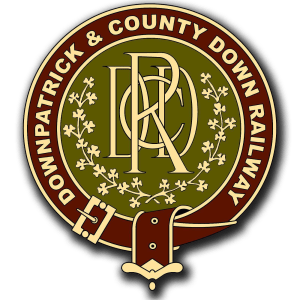| At a glance: | |
|---|---|
| Builder: | Joseph Wright & Sons (Saltley Works, Birmingham) |
| Build date: | 1862 |
| Original company: | Ulster Railway |
| Withdrawal date: | 1920 |
| Final company: | Great Northern Railway |
| Arrived at DCDR: | 1990 |
| Current status: | Under restoration |
| Current owner: | DCDR |
No. 33 was built in 1862 by Wright & Sons in England as a first class carriage for the Ulster Railway. Since it was built so long ago, not many records from its early years have survived, but we believe that it was originally a four-wheeled carriage. The Ulster Railway was the first railway company in what would become Northern Ireland, opening their line from Belfast Great Victoria Street to Lisburn in 1839 and extending in stages to Portadown, Armagh, and eventually Cavan, which it reached in 1862. The UR’s Belfast-Portadown route linked with the Dublin and Belfast Junction Railway and the Dublin and Drogheda Railway to create the Belfast-Dublin line which is still in use today. 33 is the sole extant vehicle which was owned by the Ulster Railway, making it a unique survivor and one of the most historically important vehicles in the whole of Ireland.
33 was built as a family saloon, meaning that it contained two large first-class compartments that were separated by a pair of lavatories in the middle of the carriage. Wealthy families would hire these compartments to themselves for a day’s travel. When it was built, it wouldn’t have had any of the commodities that we’re familiar with on trains today – it sat on a timber underframe, it possibly didn’t have any lights, and it certainly didn’t have any brakes! During the 1880s, shortly after the Ulster Railway became part of the Great Northern Railway in 1875, 33 was converted into a six-wheeled carriage and fitted with vacuum-operated train brakes, electric lighting, and a dynamo on one of its axles.
Following withdrawal from passenger-carrying use in 1920, 33 was used as a permanent way office at Northern Ireland Railways’ Portadown station. It was moved to a farm in Dromore in the 1970s before being preserved for guture restoration in 1987. The coach was in very poor condition when first acquired, and it spent many years on our site out in the open being used to store spare seat cushions.
After almost a century out of use grounded outside without its wheels, 33 was placed atop a specially-built cradle in 2013 which allowed it to be lifted onto a ‘brown van’ underframe and moved into the Carriage Gallery. Though the current underframe is a poor fit, it at least enables 33 to be mobile when needed, allowing it to be shunted easily and, most importantly, kept indoors.
33 is currently under restoration in our workshop, with work progressing well in spite of the coronavirus pandemic and November 2023 flooding. The coach is very popular with volunteers, and it is hope that it will eventually be outshopped in Ulster Railway condition as the oldest operational carriage in Britain and Ireland – this will give passengers a unique opportunity to sample railway travel as it was over 150 years ago. Although the project is thoroughly underway it still has a long way to go, including the construction of a brand-new underframe, but we look forward to the day it graduates from an example of ‘before’ to one of ‘after’.
